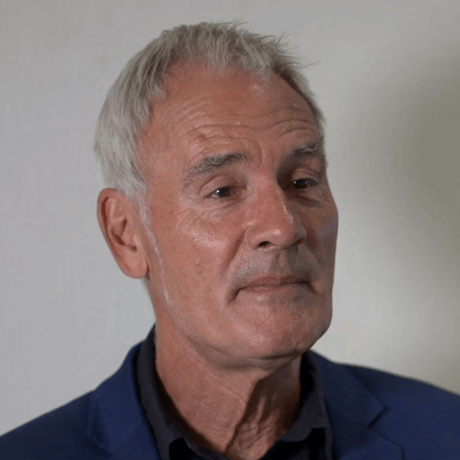
Navigating the clinical complexity of migraine prevention
Migraine is known to pose a significant burden on individuals, affecting many aspects of their lives1-4 such as loss of career potential, lifestyle and social compromises and effects on relationship.4 In addition, the indirect costs associated with migraine can be substantial, with gross domestic product losses of up to 2% reported in many countries.2 Recommendations from both the European Headache Federation and American Headache Society suggest migraine treatment should be tailored to the individual patient’s characteristics and needs.5,6 However, delivering patient-centric migraine care in clinical practice involves consideration of a number of patient-specific characteristics including demographic,7 social,1,3,4 economic1,3,4 and anthropometric variables,7 pharmacogenomic,7,8 comorbidities,9-13 predictors of response14,15 and past preventive treatments.16
Professor Christian Lampl (Head of Department of Neurology, Konvent Hospital, Linz, Austria), Professor Uwe Reuter (Professor of Neurology, Charité University Hospital of Berlin, Germany), Professor Simona Sacco (Professor of Neurology, University of L'Aquila, Italy) and Professor Gisela Terwindt (Professor of Neurology, Leiden University Medical Centre, The Netherlands) convened at the 16th European Headache Congress to share their expert opinions on navigating the complexities of migraine prevention in the real world. The experts discussed a number of topics, including challenges faced when implementing a tailored approach for individual patients, the impact of social and economic factors, comorbidities associated with migraine and the further research needed to facilitate a more patient-centric approach to patient management.
Safiri S, Pourfathi H, Eagan A, et al. Global, regional, and national burden of migraine in 204 countries and territories, 1990 to 2019. Pain 2022;163:e293–309.
Ashina M, Katsarava Z, Phu Do T, et al. Migraine: epidemiology and systems of care. Lancet 2021;397:1485–95.
Martelletti P, Schwedt TJ, Lanteri-Minet M, et al. My Migraine Voice survey: a global study of disease burden among individuals with migraine for whom preventive treatments have failed. J Headache Pain 2018;19:115.
Buse D, Fanning KM, Reed ML, et al. Life with migraine: effects on relationships, career, and finances from the Chronic Migraine Epidemiology and Outcomes (CaMEO) study. Headache 2019;59:1286–99.
Ailani J, Burch RC, Robbins MS, Board of Directors of the American Headache Society. The American Headache Society Consensus Statement: update on integrating new migraine treatments into clinical practice. Headache 2021;61:1021–39.
Sacco S, Amin FM, Ashina M, et al. European Headache Federation guideline on the use of monoclonal antibodies targeting the calcitonin gene related peptide pathway for migraine prevention - 2022 update. J Headache Pain 2022;23:67.
Al-Hassany L, Goadsby PJ, Jan Danser AH, MaassenVanDenBrink A. Calcitonin gene-related peptide-targeting drugs for migraine: how pharmacology might inform treatment decisions. Lancet Neurol 2022;21:284–94.
Pomes LM, Guglielmetti M, Bertamino E, Simmaco M, Borro M, Martelletti P. Optimising migraine treatment: from drug-drug interactions to personalized medicine. J Headache Pain 2019;20:56.
Minen MT, De Dhaem OB, Van Diest AK, et al. Migraine and its psychiatric comorbidities. J Neurol Neurosurg Psychiatry 2016;87:741–9.
Smitherman TA, Penzien DB, Rains JC. Migraine and psychiatric comorbidity. Psychiatric Times 2013;30.
Burch RC, Buse DC, Lipton RB. Migraine: epidemiology, burden and comorbidity. Neurologic Clinics 2019;37:631–49.
Torelli P, Lambru G, Manzoni GC. Psychiatric comorbidity and headache: clinical and therapeutical aspects. Neurol Sci 2006;27:S73–6.
Smitherman TA, Rains JC, Penzien DB. Psychiatric comorbidities and migraine chronification. Curr Pain Headache Rep 2009;13:326–31.
Barbanti P, Aurilia C, Egeo G, et al. Erenumab in the prevention of high-frequency episodic and chronic migraine: Erenumab in Real Life in Italy (EARLY), the first Italian multicenter, prospective real-life study. Headache 2021;61:363–72.
Barbanti P, Egeo G, Aurilia C, et al. Fremanezumab in the prevention of high-frequency episodic and chronic migraine: a 12-week, multicenter, real-life, cohort study (the FRIEND study). J Headache Pain 2022;23:46.
Eigenbrodt AK, Ashina H, Khan S, et al. Diagnosis and management of migraine in ten steps. Nat Rev Neurol 2021:17:501–14.



